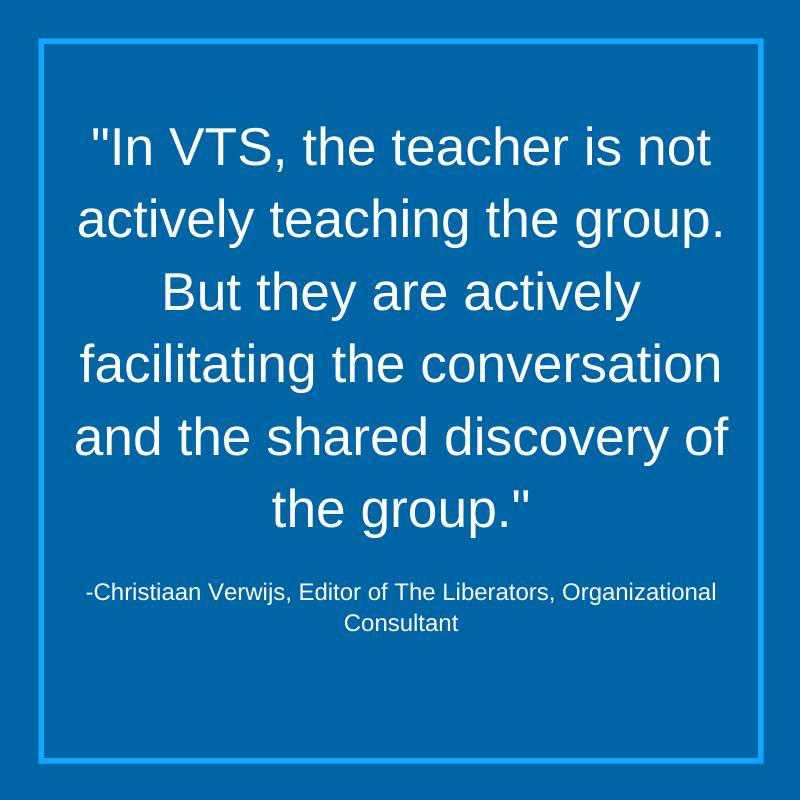Visual Thinking Strategies
Visual Thinking Strategy (VTS) is an inquiry-based teaching method that improves a student's ability to describe, analyze, and interpret imagery and information through observing and discussing visual art. VTS support the development of critical thinking skills and encourage participation in collaborative discussions, especially among students who struggle with traditional text-based or lecture-based learning environments. VTS supports the University's student learning outcomes.
Overview
Visual Thinking Strategies was developed by cognitive psychologist Abigail Housen and museum educator Philip Yenawineare. VTS is based on Housen’s Theory of Aesthetic Development and corresponding research. You can read a summary of Housen's work and the stages of aesthetic development she identified over the course of 20 years of research on VTShome.org. You can read Housen's full findings in her essay, "Eye of the Beholder: Research, Theory and Practice."
VTS is noted for developing critical, creative thinking skills that lead to increased visual literacy for students across all fields of study.
At the core of VTS are three key questions:
- What's going on in this picture?
- What do you see what makes you say that?
- What more can we find?
Step-by-Step Instructions
(Click on the image below to open the PPT in a new window and download.)
Additional Resources
- A study by Rutger's University teacher and museum educator, Emily Monty, "On Using Museum Methods in the Classroom: A Case Study With VTS."
- A case for VTS in learning environments from an organizational management perspective, "Visual Thinking Strategies as a better way to learn in organizations," by Christiaan Verwijs.
- A book by co-creator of VTS curriculum, Philip Yenawine, Visual Thinking Strategies: Using Art to Deepen Learning Across School Disciplines, details his experiences teaching elementary school age students. The stories show how VTS can be easily integrated into the classroom with structured discussions of visual art. Here's an excerpt from Chapter 1, "Permission To Wonder."
External VTS Activities
- "What's going on in this picture," - From the New York Times, intriguing images stripped of their captions -- and an invitation to students to discuss them live every Monday throughout the school year.
- "10 Intriguing Photographs to Teach Close Reading and Visual Thinking Skills." - Selections from the "What's going on in this picture" weekly interactive series from the New York Times and instructions for facilitators.
- A series of videos from the creators of Visual Thinking Strategies documenting VTS in K-12 classroom across multiple disciplines.


[1595953495].jpg)